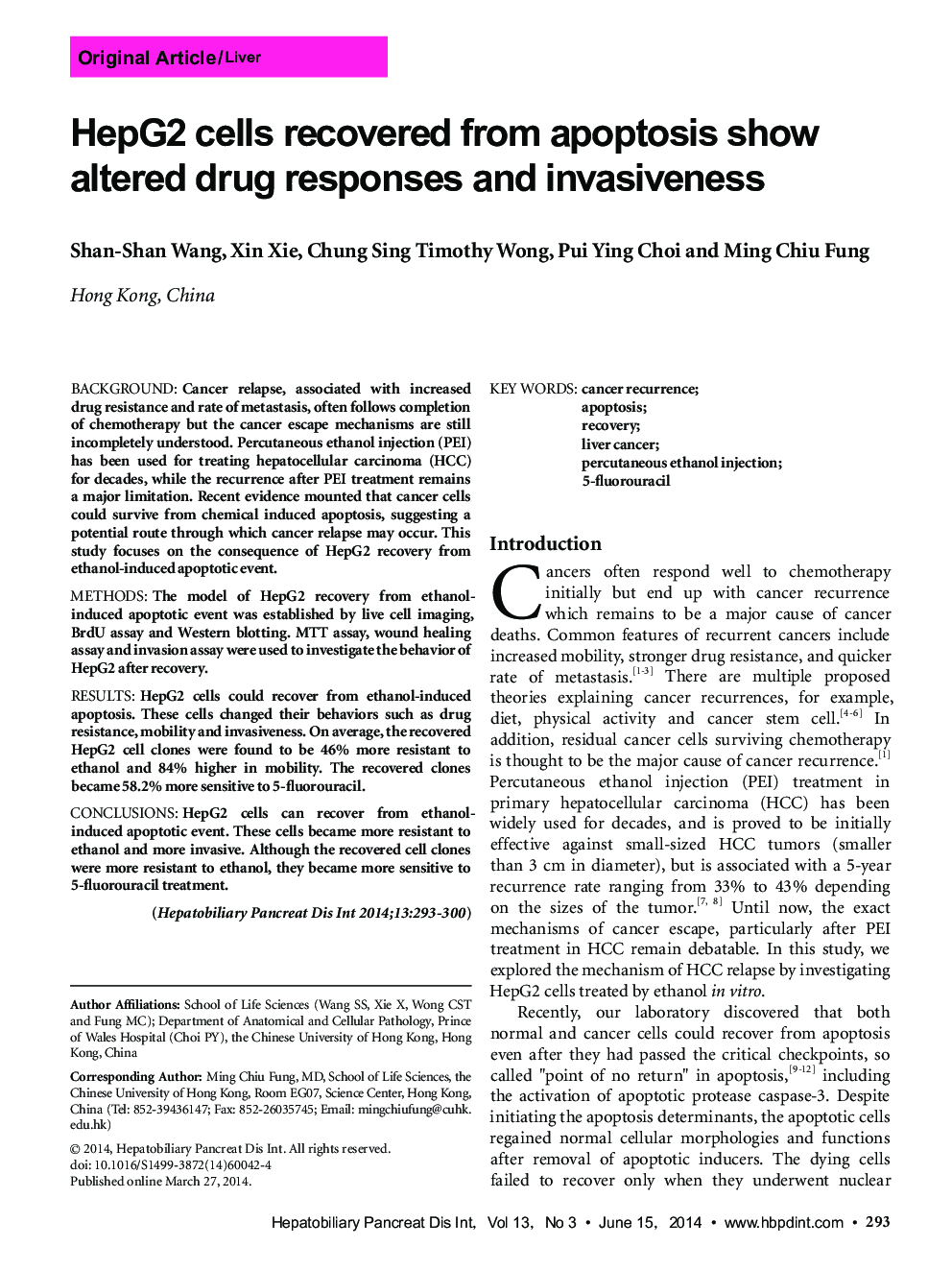| کد مقاله | کد نشریه | سال انتشار | مقاله انگلیسی | نسخه تمام متن |
|---|---|---|---|---|
| 3337425 | 1213799 | 2014 | 8 صفحه PDF | دانلود رایگان |

BackgroundCancer relapse, associated with increased drug resistance and rate of metastasis, often follows completion of chemotherapy but the cancer escape mechanisms are still incompletely understood. Percutaneous ethanol injection (PEI) has been used for treating hepatocellular carcinoma (HCC) for decades, while the recurrence after PEI treatment remains a major limitation. Recent evidence mounted that cancer cells could survive from chemical induced apoptosis, suggesting a potential route through which cancer relapse may occur. This study focuses on the consequence of HepG2 recovery from ethanol-induced apoptotic event.MethodsThe model of HepG2 recovery from ethanol-induced apoptotic event was established by live cell imaging, BrdU assay and Western blotting. MTT assay, wound healing assay and invasion assay were used to investigate the behavior of HepG2 after recovery.ResultsHepG2 cells could recover from ethanol-induced apoptosis. These cells changed their behaviors such as drug resistance, mobility and invasiveness. On average, the recovered HepG2 cell clones were found to be 46% more resistant to ethanol and 84% higher in mobility. The recovered clones became 58.2% more sensitive to 5-fluorouracil.ConclusionsHepG2 cells can recover from ethanol-induced apoptotic event. These cells became more resistant to ethanol and more invasive. Although the recovered cell clones were more resistant to ethanol, they became more sensitive to 5-fluorouracil treatment.
Journal: Hepatobiliary & Pancreatic Diseases International - Volume 13, Issue 3, 15 June 2014, Pages 293-300